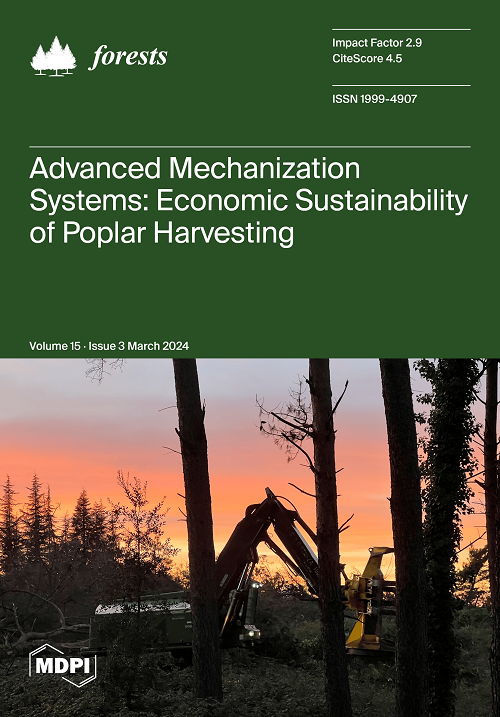Responses of Enzymatic and Microbiological Soil Properties to the Site Index and Age Gradients in Spanish Black Pine (Pinus nigra Arn ssp. salzmannii) Mediterranean Forests
IF 2.5
2区 农林科学
Q1 FORESTRY
引用次数: 0
Abstract
This research analyzes how enzymatic and microbiological soil properties relate to site index (SI) and forest maturity (stand age) in Pinus nigra (P. nigra) even-aged forests. The soil parameters selected for multivariate analysis were four enzymatic activities (β-glucosidase, urease, dehydrogenase, and alkaline phosphatase), two microbiological properties (microbial biomass C and basal respiration), and five physicochemical parameters (TOC, N, P, pH, and soil water content). We used LiDAR, the digital elevation model, and the terrain model to obtain a result for the dominant height in each plot. The soil parameters were analyzed in the function of five site index classes (8, 11, 14, 17, and 20) and six age classes (50, 70, 90, 110, 170, and 210 years). Our findings emphasize that the dehydrogenase enzyme exhibited variations in response to both the site index and stand age. The activity of dehydrogenase positively correlated with sites characterized by a higher nutrient demand, particularly on young and poor-quality sites (lower SI), indicating activation. Therefore, dehydrogenase could serve as an index to elucidate both site quality and stand development in P. nigra stands, making it a potential indicator of forest ecosystem development.西班牙黑松(Pinus nigra Arn ssp. salzmannii)地中海森林的酵素和微生物土壤属性对地点指数和年龄梯度的响应
本研究分析了土壤酶和微生物特性与黑松(Pinus nigra)偶数年龄森林的地点指数(SI)和森林成熟度(林分年龄)之间的关系。选择用于多元分析的土壤参数包括四种酶活性(β-葡萄糖苷酶、脲酶、脱氢酶和碱性磷酸酶)、两种微生物特性(微生物生物量 C 和基础呼吸作用)以及五种理化参数(总有机碳、氮、磷、pH 值和土壤含水量)。我们使用激光雷达、数字高程模型和地形模型得出了每个地块的优势高度。土壤参数根据五个地点指数等级(8、11、14、17 和 20)和六个年龄等级(50、70、90、110、170 和 210 年)进行了分析。我们的研究结果表明,脱氢酶随地点指数和树龄的变化而变化。脱氢酶的活性与养分需求较高的地点呈正相关,尤其是在年轻和质量较差的地点(SI 较低),这表明脱氢酶被激活。因此,脱氢酶可作为一项指标,用于阐明黑叶桉林的立地质量和林分发展情况,使其成为森林生态系统发展的潜在指标。
本文章由计算机程序翻译,如有差异,请以英文原文为准。
求助全文
约1分钟内获得全文
求助全文
来源期刊

Forests
FORESTRY-
CiteScore
4.40
自引率
17.20%
发文量
1823
审稿时长
19.02 days
期刊介绍:
Forests (ISSN 1999-4907) is an international and cross-disciplinary scholarly journal of forestry and forest ecology. It publishes research papers, short communications and review papers. There is no restriction on the length of the papers. Our aim is to encourage scientists to publish their experimental and theoretical research in as much detail as possible. Full experimental and/or methodical details must be provided for research articles.
 求助内容:
求助内容: 应助结果提醒方式:
应助结果提醒方式:


